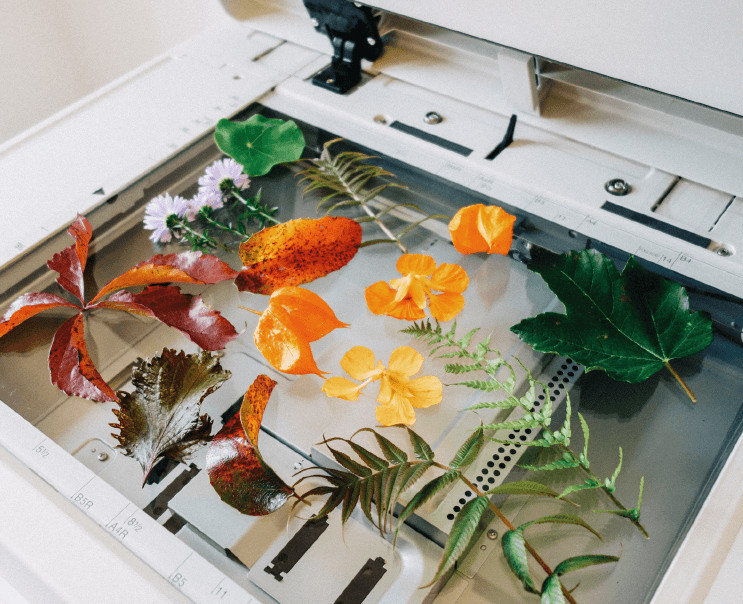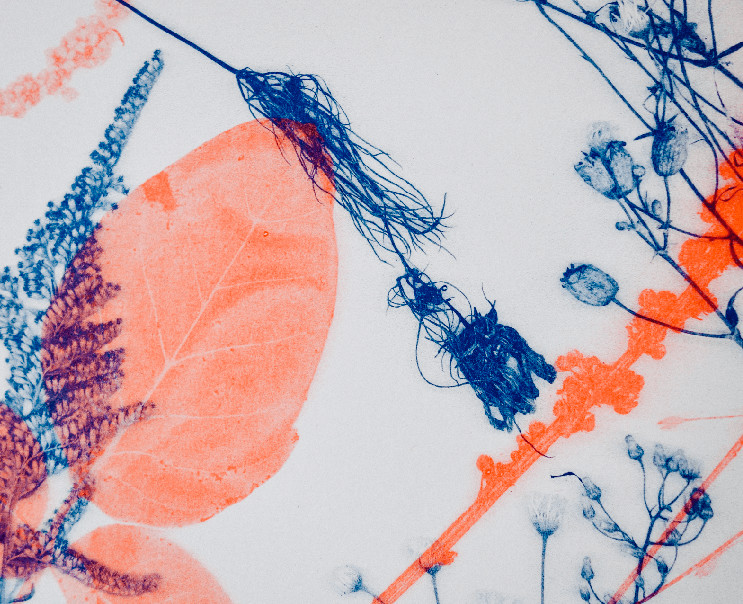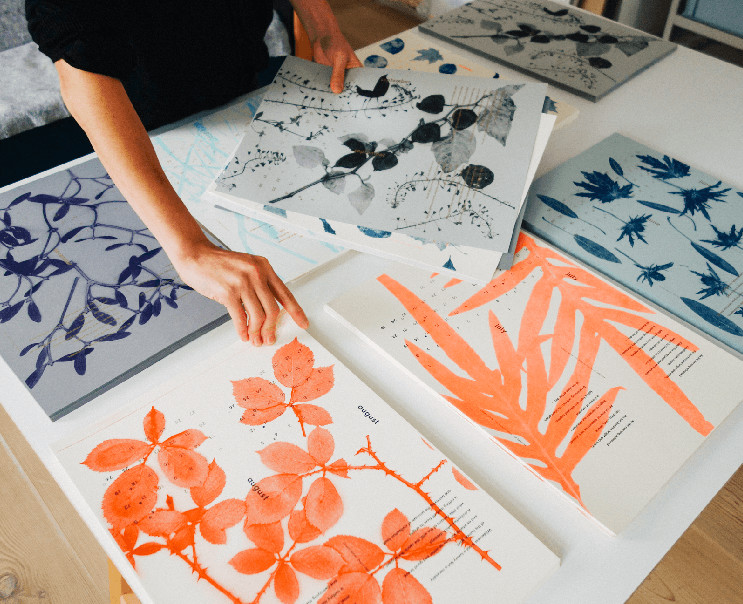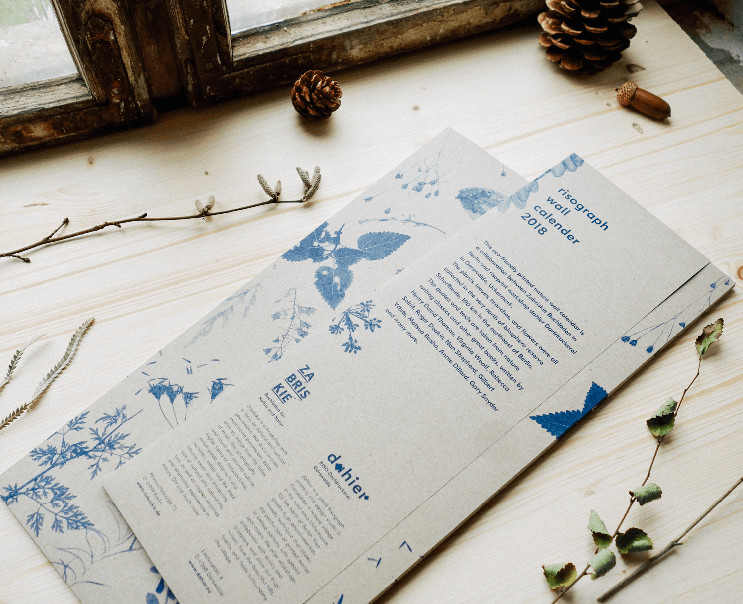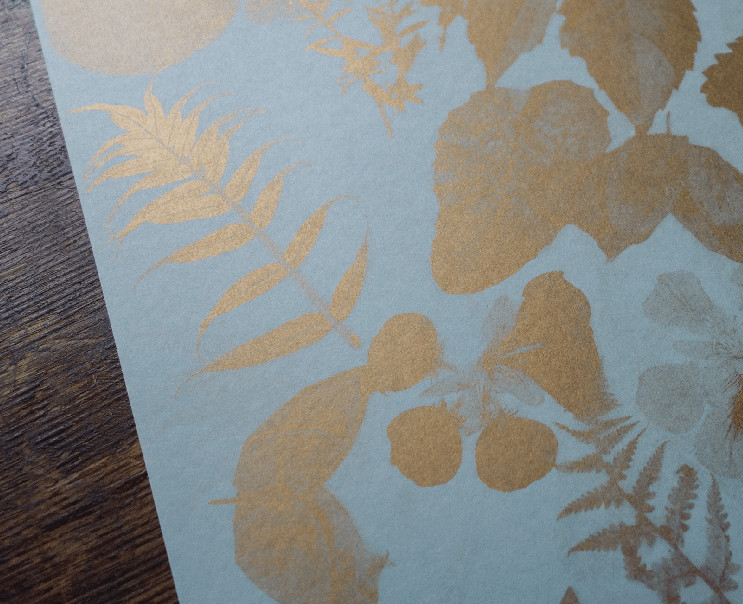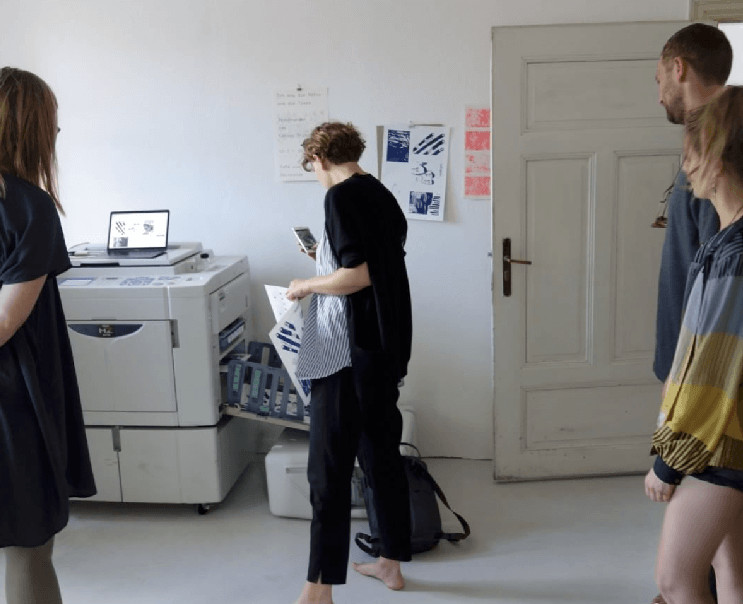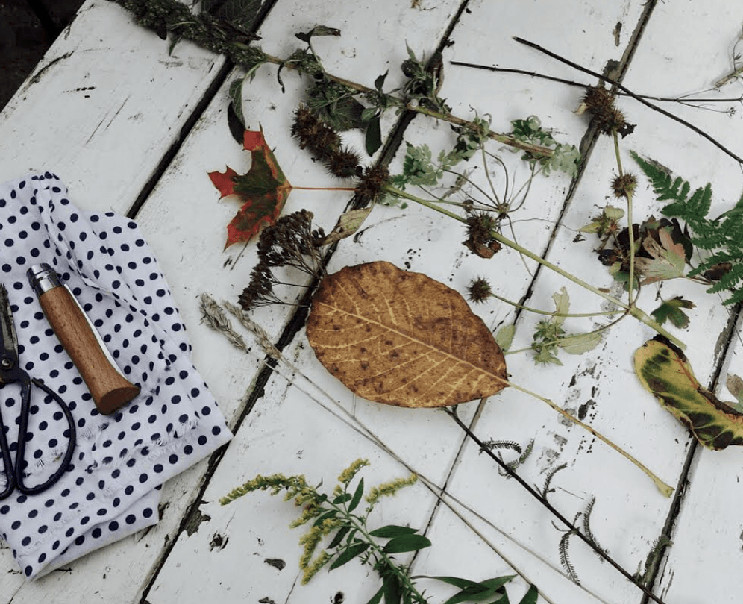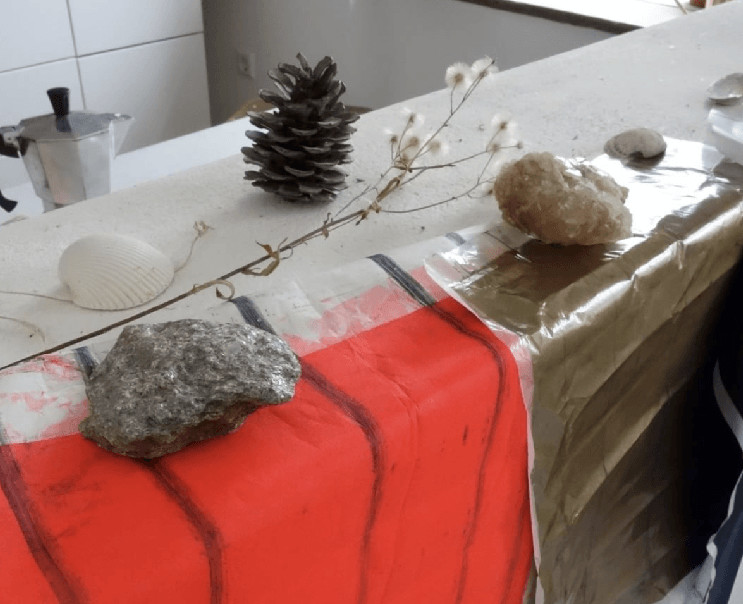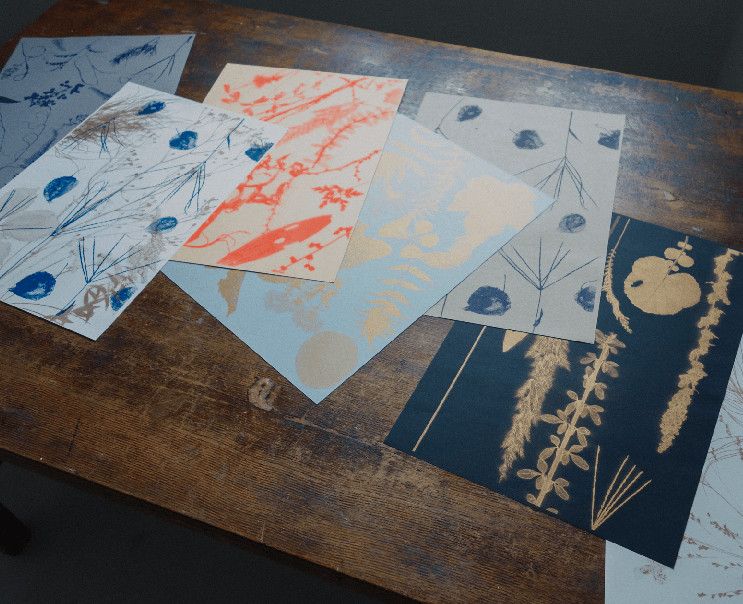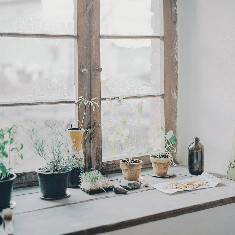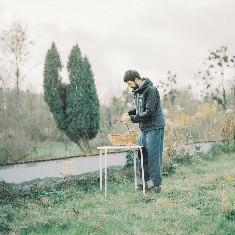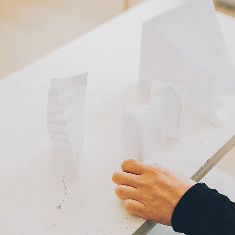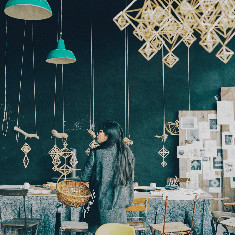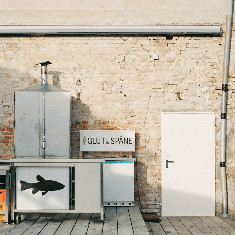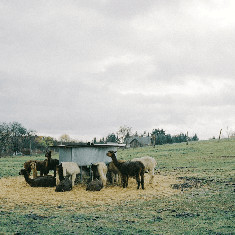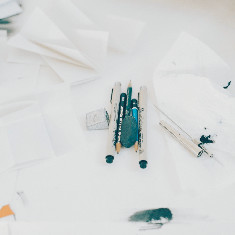dahier
リソグラフ印刷/Risograph Printing
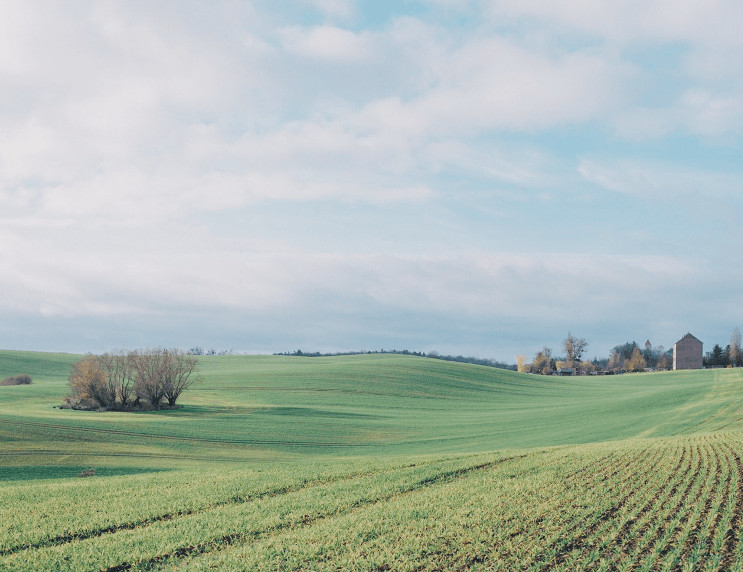
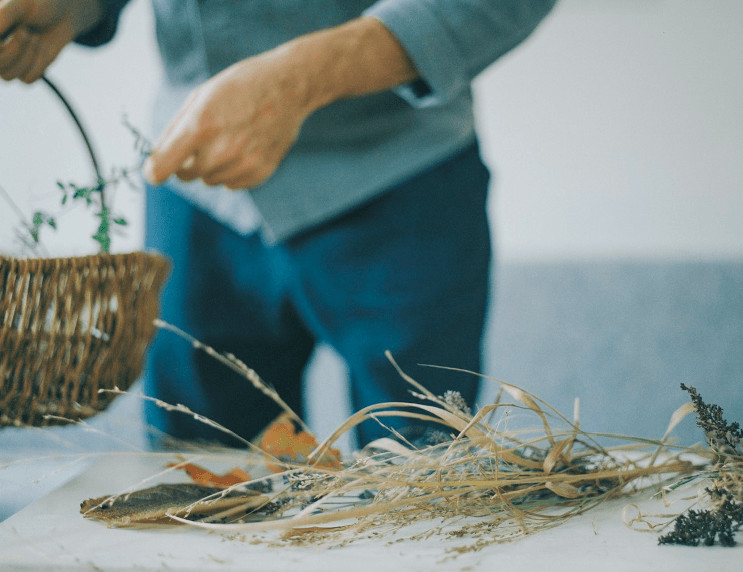
小さな村の印刷スタジオ
一瞬の美を残す『ダヒアー』のリソグラフィー
Risograph by “dahier” that preserves the beauty of a moment
首都ベルリンから北へ100km、車で1時間半くらい走ったところに、ゲルスヴァルデというエリアがある。石造りの美しい教会が町の中央にあり、周囲には旧東ドイツ時代の趣を残す古い住宅が数十軒、小さな商店がポツンとある。冬を目前にしても、依然緑鮮やかな草原のなかにある、ドイツを車で走ればいくつも車窓を通り過ぎていくような、人口1600人という田舎の小さな村である。しかし、数年前から才能あるクリエイティブな若者たちが都心からこの村に移り住み、興味深いコミュニティを形成しつつあるという。
今回Making Thingsが訪ねたのは、美しいリソグラフプリントをつくるデザインスタジオ『dahier(ダヒアー)』だ。
アーティストのヤン・リンドバーグさんと、ジョン ワ ミンさんが取り組む、野草や花をつかったリソグラフプリントを中心にしたものづくりには、地域に根付きながら広く世界と繋がっていく、グローカルな視点がはっきりと打ち出されていた。私たちは都心から人を惹きつける村、ゲルスヴァルデに起こる小さな変化に注目し、その秘密を探った。
100 km north of the capital Berlin, about 90 mins drive by car, is an area called Gerswalde. With a beautiful stone church in its center, there stand small shops and several tens of old houses that retain the appearance of former East Germany. It is a small rural village with a population of 1600 in the meadow. The scenery, vividly green even in the even at the end of autumn, is so typical of Germany that you will find one everywhere if you drive in this country. Since several years before, however, some talented young creators have started to move into this village from the city and form an interesting community.
This time, we Making Things visited “dahier”, a design studio that creates beautiful Riso prints. Artists Jan Lindenberg and Jeong Hwa Min are working mainly on risograph printing using plants and flowers. In their creative activity, we can clearly see their glocal point of view, to connect to the world being rooted in the community. We focused on the small changes happening in Gerswalde, a village that has been attracting city dwellers, and explored the secret.


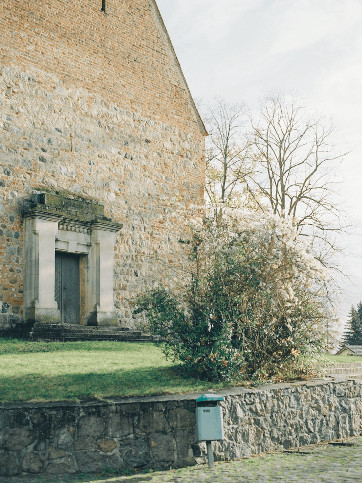
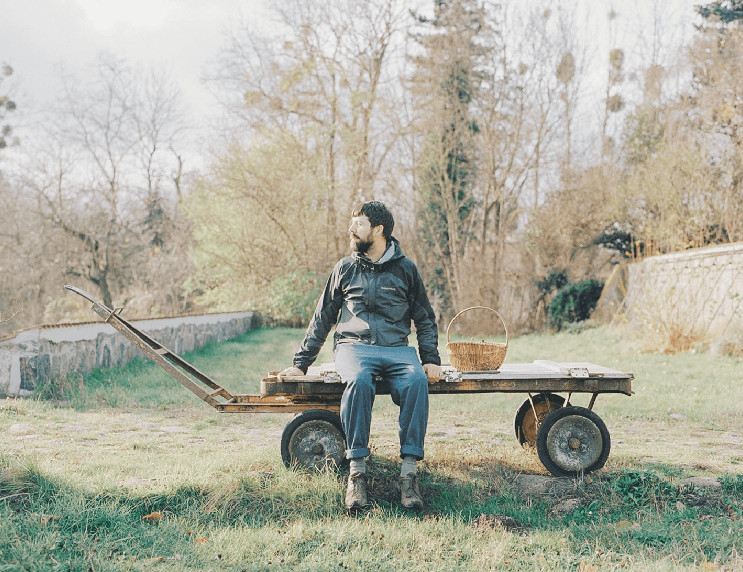

「これはギリシャのクレタ島の山で採ったサルビアのお茶です。口に合えばいいんだけど」。地中海の真ん中に浮かぶ島で、ヤンさんが自ら採取し作ったお茶は、彼の口調そのままに、優しい、懐かしい味がする。世界のどこか遠いところで、きっと毎日淹れられているであろう日常の味だ。
「この建物は1785年頃に建てられた、村の学校の校舎だったんです。窓が多いのは、光を多く取り入れる必要のある校舎ならではの特徴です」。ヤンさんとジョン ワさんの暮らしと、作品を生み出すインスピレーションがつまった、この石造りの大きな建物には、たしかに大きな窓がたくさんあって、差し込んでくる光が室内をまるく照らしている。
「ワークショップなどを通して印刷技術を伝える活動をしている僕らにとって、この建物が学校だったことはとても意味深い事実なんです。時代を越えて人が集まり、知や経験を共有するためにこの建物に身を置けることに、大きな幸せなを感じています」。
“This is herb tea made from sage leaves I picked in the mountains in Crete. I hope you like it.” The tea, Mr Jan picked on an island in the middle of the Mediterranean Sea and made by himself, tastes gentle and nostalgic just like his soft tone. It must be an everyday taste that is made daily somewhere far in the world.
“This building was a schoolhouse built in around 1785. Characteristically, it has a number of windows because it was necessary to ensure sufficient lighting.” Indeed, this large stone building, filled with their life and inspiration for creation, has a lot of big windows to light the room gently.
“We have been passing on printing technology through workshops and to others. For us, the fact that this building was once a school means a lot. We are hugely grateful for being here to share our knowledge and experience with people just like the old days.”

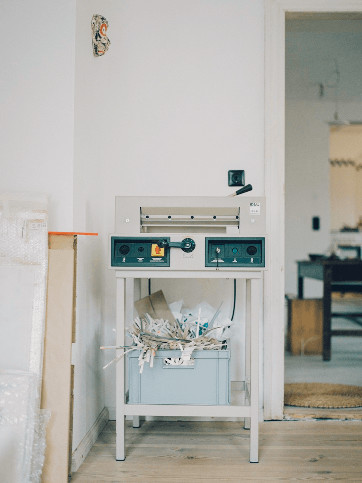
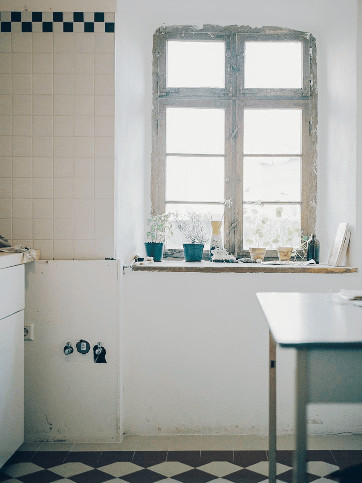
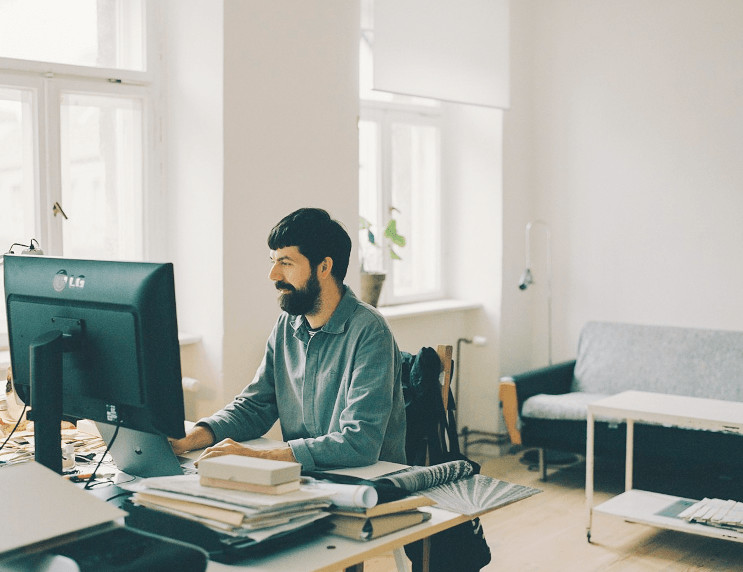
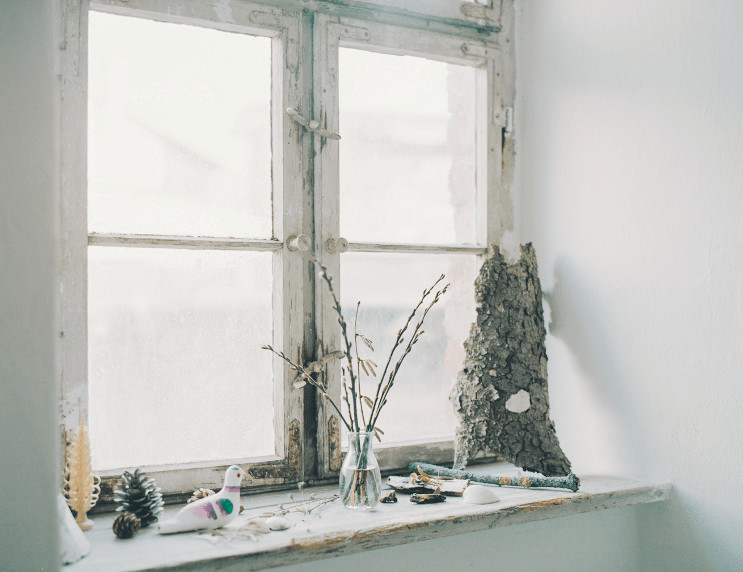

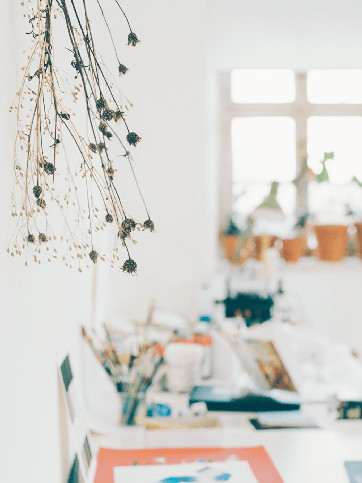
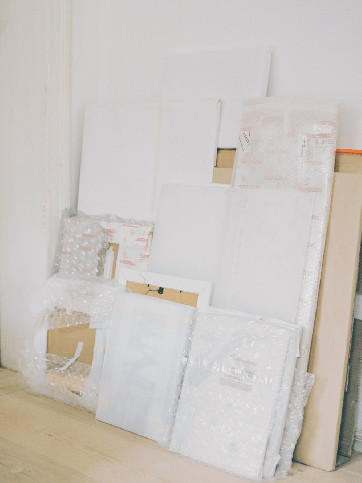
作品と向き合うことは、自然と向き合うこと。
- リソグラフ印刷との出会いは?
- ヤン・リンドバーグ(ヤン): 初めてリソグラフ印刷を知ったのは大阪に旅行に行った時、あるギャラリーに置かれていたフライヤーの美しい質感に目が留まりました。近所の小さな印刷店で印刷されたことを知り、見学にもいきました。それからしばらくリソグラフのことは頭から離れてましたが、当時、高円寺のアパートをシェアしていた友人が、荻窪の公民館にリソグラフ印刷機があることを教えてくれたんです。そこにはリソグラフで印刷されたアンダーグラウンドなzineレーベルの作った作品なんかがたくさんあって、ワクワクしたのを覚えています。そんな風にしてリソグラフ印刷への興味が再燃しました。
それから2013年にベルリンに戻り、ジョン ワと出会いました。リソグラフィについての多くは、彼女から教わったんです。 - ジョン ワ: 大学の卒業制作でリソグラフ印刷でイラストレーションの本を製作しました。それまでは、大学に設備があったのでシルクスクリーンを使った作品が多かったのですが、卒業後はリソグラフ印刷を使うようになりました。
- ダヒアーのリソグラフプリントは、さまざまな野草や花が独特のバランスでコラージュ
されています。重ねられたインクが織りなす配色や紙の手触り、細部にいたるまで
強いこだわりを感じます。野草や花を作品づくりの主題にしている背景には、
どんな思いがありますか。 - ヤン: やっぱり野原や森のような自然のなかに暮らし始めたことが大きいですね。都会から田舎に越してきた僕らにとって、やっぱりいちばん作品づくりに影響を与える要素だと思います。あと初夏に引っ越してきたことも大きかった。もう、そこかしこで色とりどりの花々が咲き乱れてて。ほとんどの花は初めて見るものばかりだったけど、そもそも植物の美しさなんて、都会生活のなかで意識したことなかったですね。
- ジョン ワ: もともと自然との繋がりがあったわけではありません。むしろまったくなかったと言えます。私は釜山やソウルといった大都市で育ち暮らしていましたが、都市の外にある自然がこんなに美しいことを知りませんでした。そして今、作品作りに集中する時間ができたことで、ますます自然に近い暮らしがクリエイティブに与える影響を感じています。
- ヤン: デザイナーとして、イラストレーターとして、これまで僕らは人工的なものをたくさんつくってきました。だけど野草や花のような、とてもシンプルで完成されたものをそのまま受け入れ作品に取り込むことで、ありのままの美しさへの敬意と賞賛になるのではと感じています。
作品と向き合うことは、この土地の自然と向き合うこと。それが結果的に村との強い繋がりにもなっていくのだと思います。
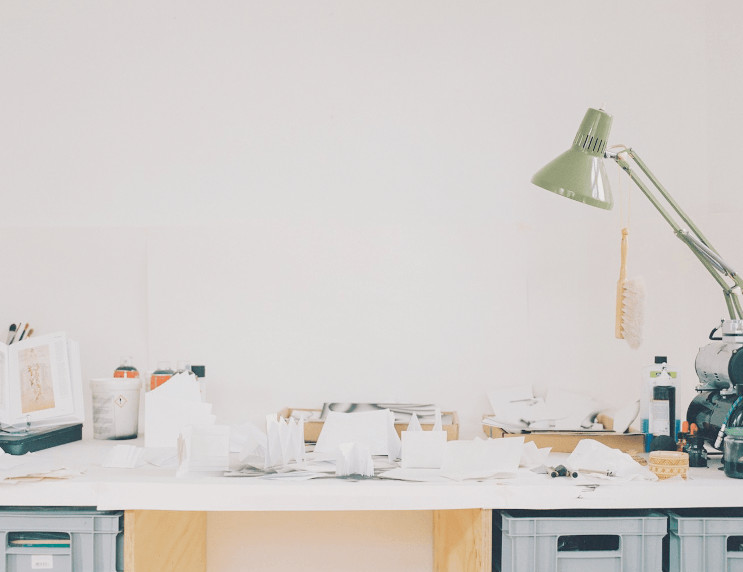
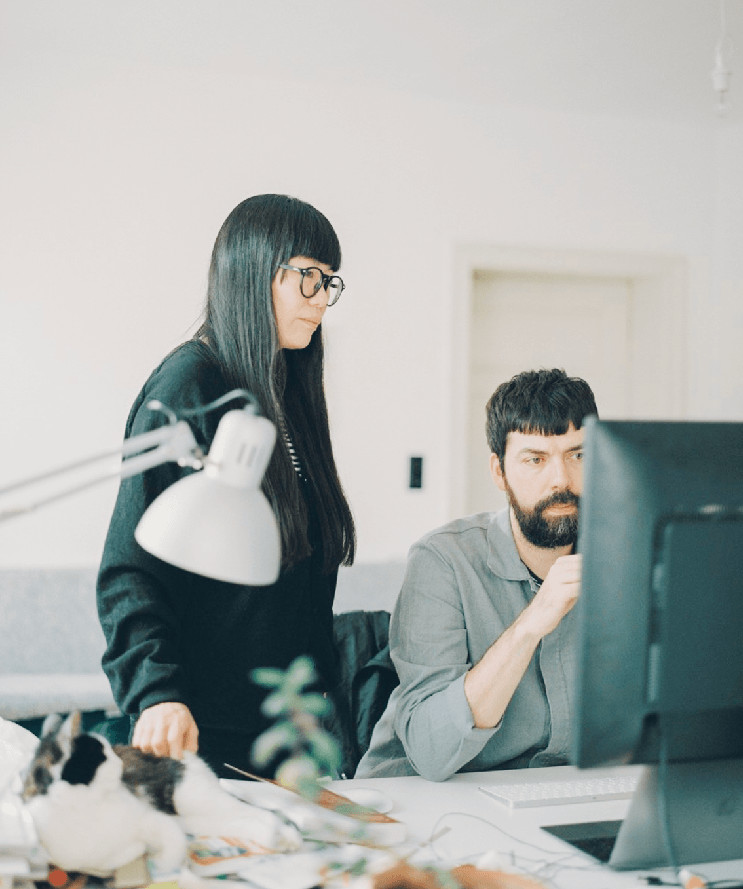

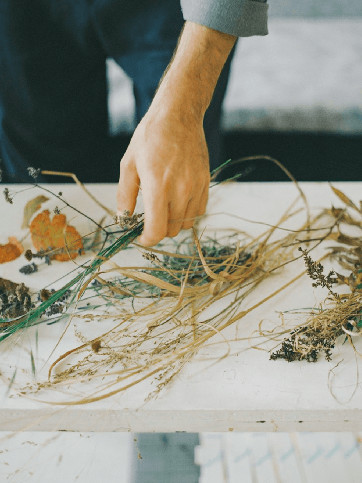

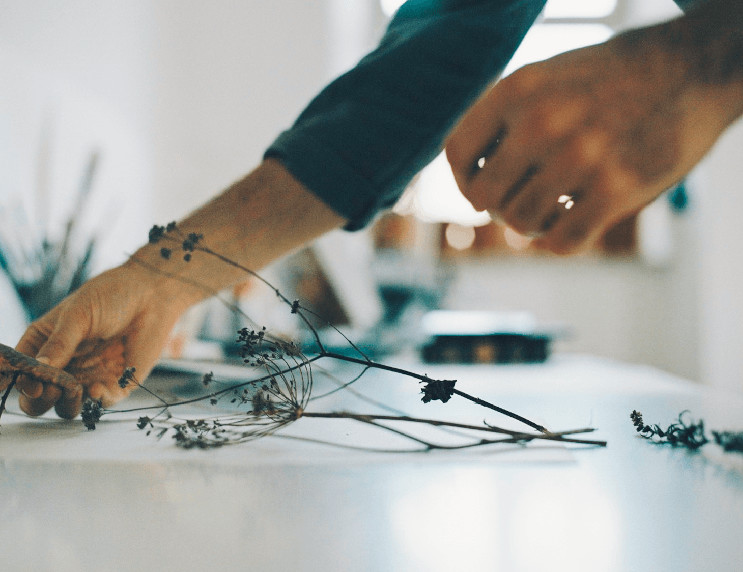
- How did you get to know risograph printing?
- Jan Lindenberg (Jan): I first saw and heard about risograph printing on my travel to Osaka where I discovered a gallery. I learned that their beautiful flyers were printed by a small printing shop down the road. In the years that followed I almost forgot about risograph printing, but my interest was reawakened when a good friend of mine that I was sharing a flat with in Koenji for a brief time in 2011 told me about a risograph printing machine at the Ogikubo community center. I learned that many of the pamphlets and underground zines were printed with it. So I got interested in the printing technique again.
Then in 2013 when I returned to live in Berlin and got together with Jeong Hwa, I learned from her more about risograph printing. - Jeong Hwa: I printed my graduation work, an illustrated book on a Risograph machine and after I graduated from the university, it was easier to do risograph printing as I had no access to the university silk screen printing shop anymore.
- Risograph printing by dahier are uniquely balanced collages with various kinds of
plants and flowers. We feel your strong preferences in all details,
in the color arrangement created by layered ink as well as in the texture of the paper.
What made plants and flowers your theme of creation? - Jan: There are different reasons why we are using plants and flowers for printing. Coming from the city and moving here to the countryside was a big contrast. It gives us a strong impact to live so near to nature, fields, and forests. Especially because we moved here in early summer, everything was in full bloom and there were so many different and colorful flowers everywhere. Many of the flowers were new to us and we had never observed them in such great detail in our day to day lives.
- Jeong Hwa: I was not very familiar with nature. Actually, not at all. I grew up in big cities like Busan and Seoul. Until recently, I didn't know that nature outside of cities is such beautiful. And now, since I have time to concentrate on my creation, I am feeling that this style of living near to nature affects my creative activity greatly.
- Jan: As designers and illustrators, we are always used to creating artificial things, but by using the plants and flowers as they are, I feel it is very humble just to use and accept the things as they are and to honor and celebrate their beauty.
Finally using plants and flowers as objects to design and create, we are closely connected to the village and area.
- リソグラフのどんなところが好きですか。また大切にしていることを教えてください。
- ヤン: 僕らが、いちばん大切に考えていることは、美は限りある一瞬だということ。そして僕らがやっているリソグラフ印刷の工程には、自然における季節のサイクルと、とても大きな関連性があると強く実感しています。
この地域では、夏の時期はとても短くて、花が咲く期間はほんの数週間程度。だから野草や花を使ってコラージュ作品をつくることは、その存在を保存することにつながると思っています。例えばサイズ。印刷機は、野草や花をきっちりありのままの大きさで表現しますし、形状や質感に関しては、自然の色をそぎ落とし1色のインクで印刷することで、むしろ強調されます。僕らが摘んできた野草や花が持つ美しさは、リソグラフ印刷機のスキャナーによってデジタル化され、別の何か新たなものに翻訳されるのです。 - このプロセスは、写真を撮ることにも似ているかもしれませんね。
- ヤン: そうですね。ただ、“撮影された”植物はスキャナーによって押し潰されて、破壊されてしまいます。そしてスキャンされたイメージは、ハードディスクに保存されることもなく、印刷機によってマスターと呼ばれる版を生成してしまいます。だけどそれは、次の版がつくられると使えなくなってしまいます。「デジタル化するんだけど、版のコピーができない」、そこに僕は、このプロセスの意味を感じているんです。
あと、スキャナー台の上で、手作業で草花をアレンジすることは、とても不正確で完全にはコントロールの効かないものです。スキャナーの蓋を閉じることで起こる自然なばらつきも、とても魅力的な要素なんです。
- What factor of risograph printing attracts you most?
Also, tell us what is important to you. - Jan: For us, the most important factor is the connection of the concepts of “beauty” with “scarcity” and “impermanence”. There are a strong connections and parallels between the natural seasonal cycle and the process of risograph printing.
The summertime here in the area is quite short and the flowers are maybe blossoming only for a couple of weeks or so. When we are making plants and flowers collages with the Risograph, we can preserve certain features like the size of the plants because they are printed in exactly the same dimensions. Other aspects, like the form and shape, and also textures, even get intensified because they are only printed in one color tone losing the natural color information.
So when we collect and arrange flowers on the scanner of the Risograph, their beauty gets digitized and translated to something new. - That process sounds like taking photos.
- Jan: Yes, but the “photographed” plants are destroyed because the scanner presses them. And the digitized form is not like scanning an image and storing it as a file on a hard disk because the machine directly creates a master that can only be used until another master is created on the same color drum.
I therefore think that the process is interesting. It is a digital translation that in itself is unique and non-reproducible once the master is lost.Another important aspect is the inaccuracy when manually arranging the flowers and plans on the scanning surface. We cannot completely control the layout because when closing the cover of the scanner and pressing it down, some displacements of the plants and flowers can occur.
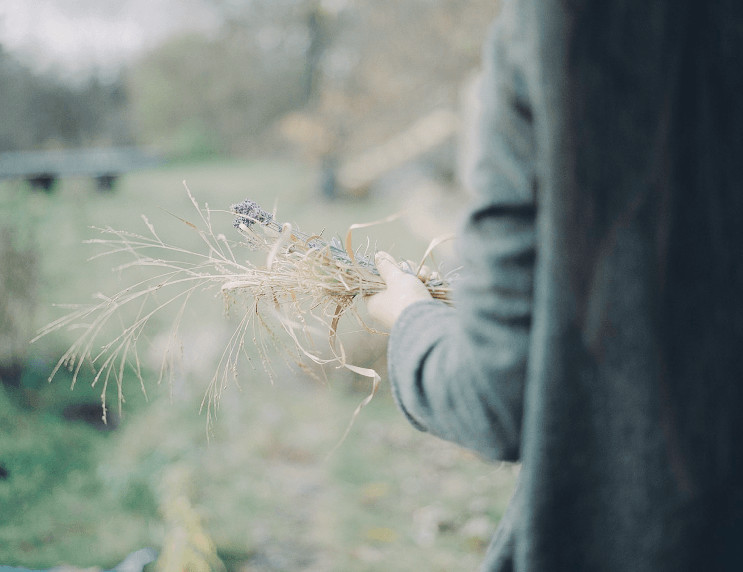
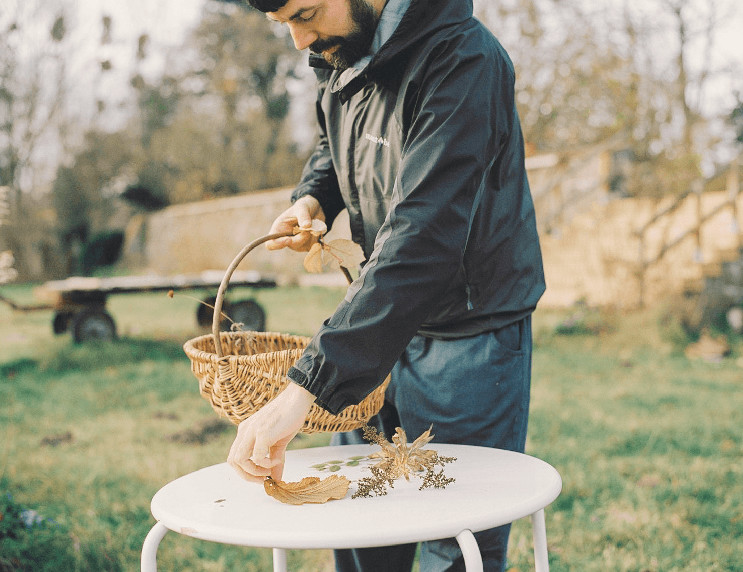

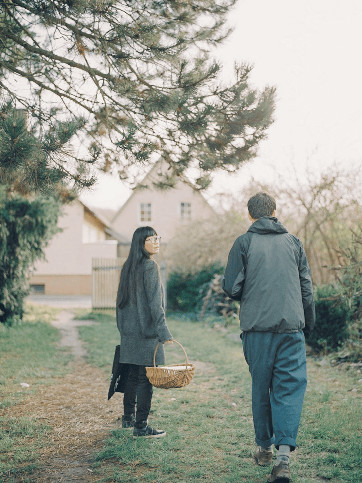
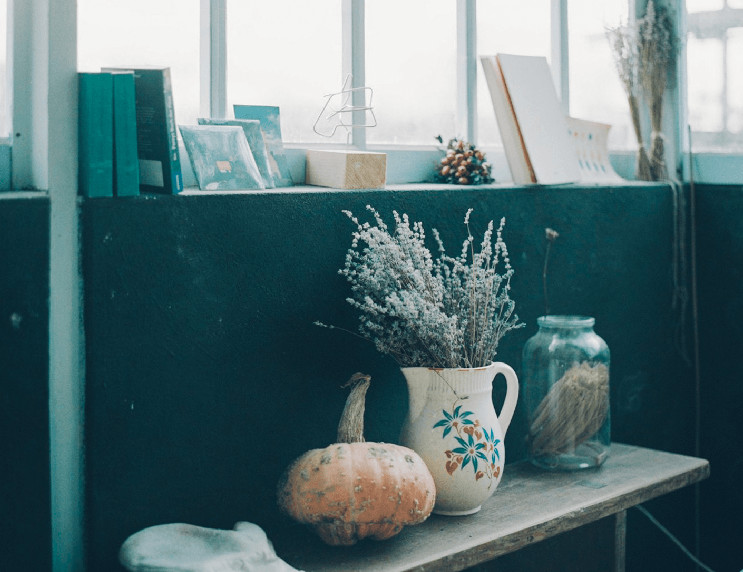
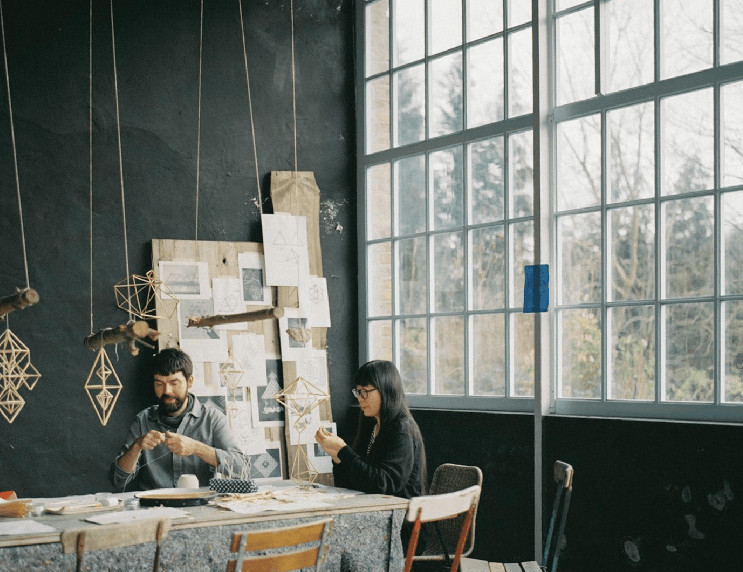
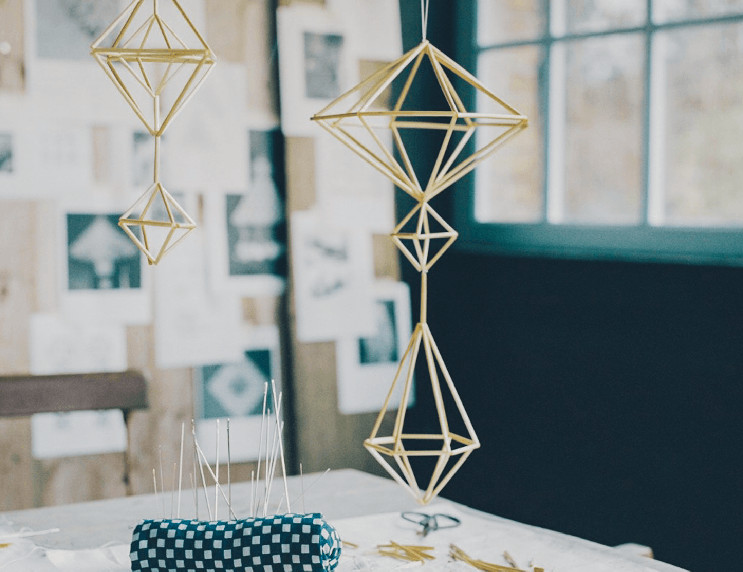
新たなものづくりが、人を惹きつけ、地域を変える
- おふたりは昨年2017年夏に、このゲルスヴァルデに印刷スタジオを
オープンしたばかりですが、現時点でどんな印象を持っていますか。 - ヤン:自然の存在を身近に感じることや季節の移り変わりを感じること。それにこの村に住む人達との関係性が、都市での暮らしと最も大きく違う点だと感じています。村の人口は1600人だけどエリアはとても広いので、ここでは人に会うことは特別な意味を持ちます。人のつながりはとても強く、直接的です。ここでは、人々が寄り合いお互いを助け合うことはとても当たり前のことなんです。
- この村で進んでいるクリエイティブな動きについて教えてください。
- ヤン:ゲルスヴァルデには、ベルリンから移り住んだり通っているクリエイティブな仲間たちがたくさんいます。中でもパイオニアとなって人を惹きつけているのが、ローラ・ランディルという映画ディレクターです。彼女と彼女の家族が、このムーブメントを始めたと言ってもいいでしょう。彼らは教会の前にある古いホテルを購入し、自分たちの手でセンス良くリノベーションしました。とても明るく親切な家族で、村の人たちともうまくやっています。彼女と話をしているとさまざまな可能性を実感することができるんです。「そういえばローラは今、ベーカリーを始めたい人を探しているよ」こんな感じで、何かを始めたい人にとっては、ワクワクするような可能性に満ちた雰囲気がありますね。
- 話を聞いているとポジティブでオープンな気分が伝わってきます。
- ヤン:そうですね。たくさんのクリエイティブな友人たちが、そうやってこの村に少しずつ集まってきたんです。日本人女性が3人であたたかい季節にオープンさせる『Café zum Löwen』も大変人気があります。大きなパインツリーが茂るグリーンハウス(温室)を使った広々として気持ちの良いカフェです。美しいガーデンを眺めながら食べるおにぎりやケーキも絶品ですよ。いつも都心から多くの人たちがその世界観を求め足を運んでいますね。
そうして僕らもローラとこの村の可能性について語り合い、移住を決意したんです。そうそう、僕らも新たにローラの家族が住む建物の一階に、この春「ローウェン・ハウス」というギャラリー・ショップをオープンさせる予定なんです。その一角にはベルリンにある自然と文化にフォーカスした書店『Zabriskie(ツァブリツキー)』とコラボレートした小さなセレクト本の空間も作ります。それぞれの感性が共鳴する場所になりそうです。 - ゲルスヴァルデのコミュニティにおいて、ダヒアーはどんな存在を目指していますか?
- ヤン:田舎の小さな印刷屋さんのような存在になりたいと思っています。名刺やパンフレットなどの印刷から、リソグラフを使ったワークショップなどを通して、地域の人々を繋ぐ活動をしています。コミュニティを形成する一員として、何か村のためになることをやりたいと常に考えています。
印刷の注文はドイツ国内はもちろん、アメリカからアジアまで世界各地から受注していますが、同時にこの村にしっかりと根をはりたい。世界と繋がっていながら、地域に愛される村の印刷屋さんでありたいのです。
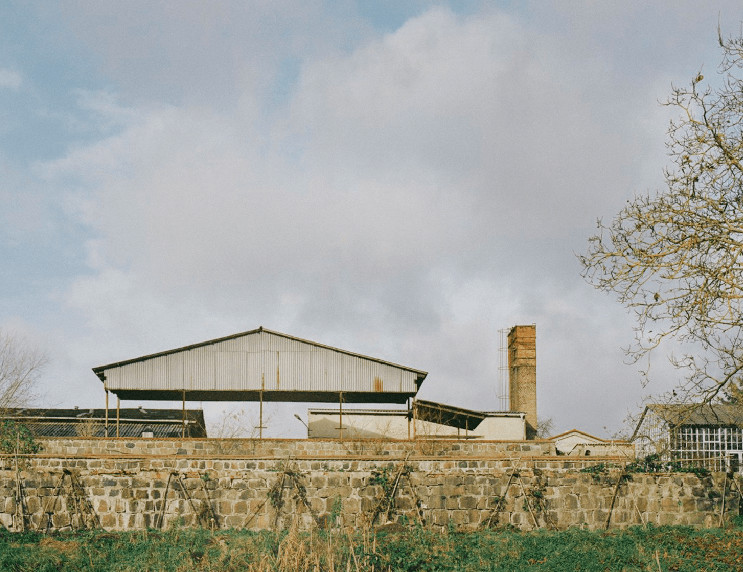
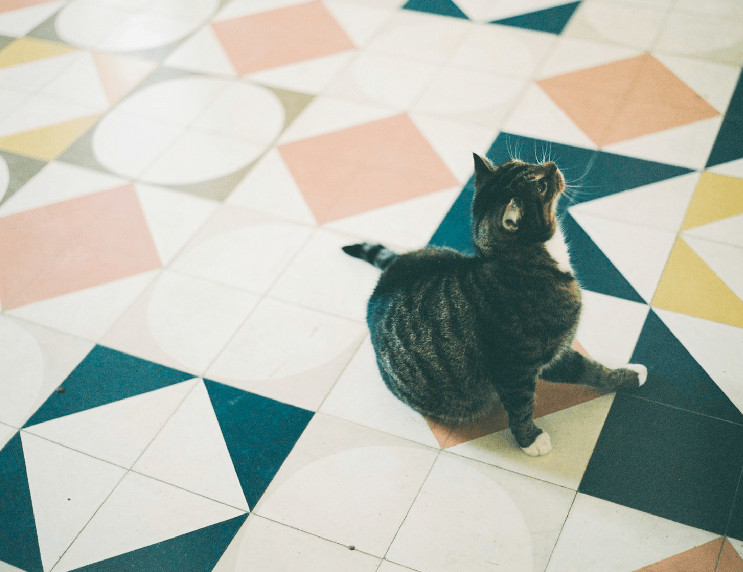

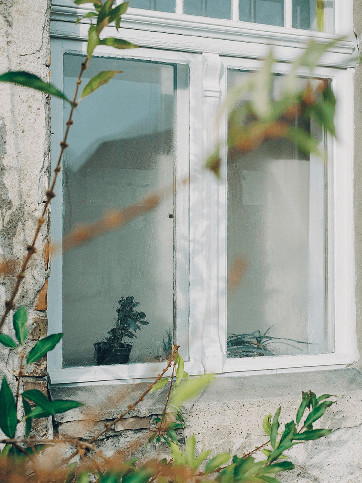
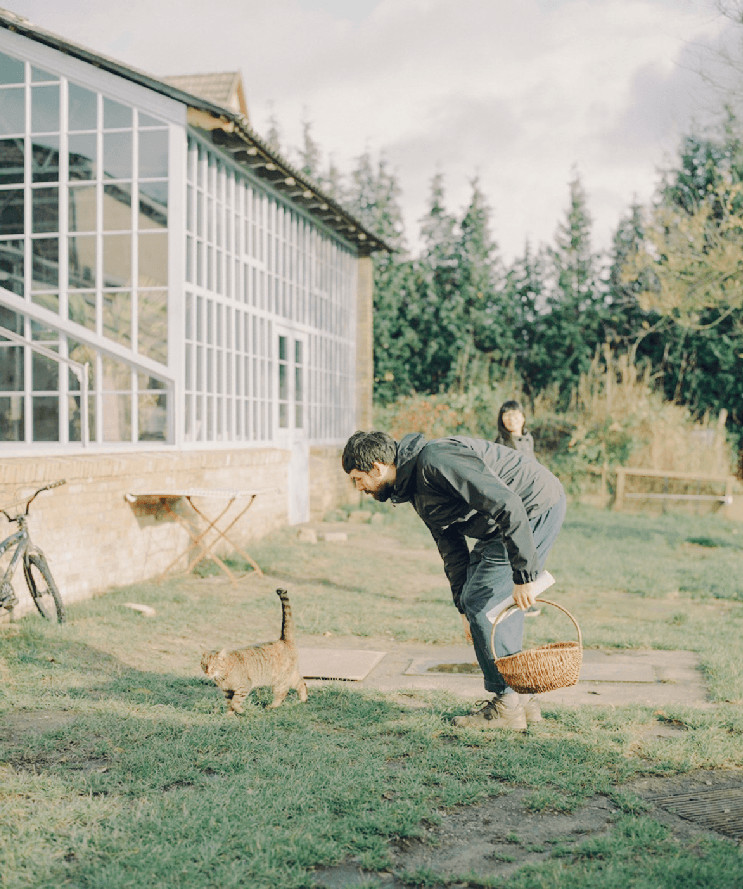
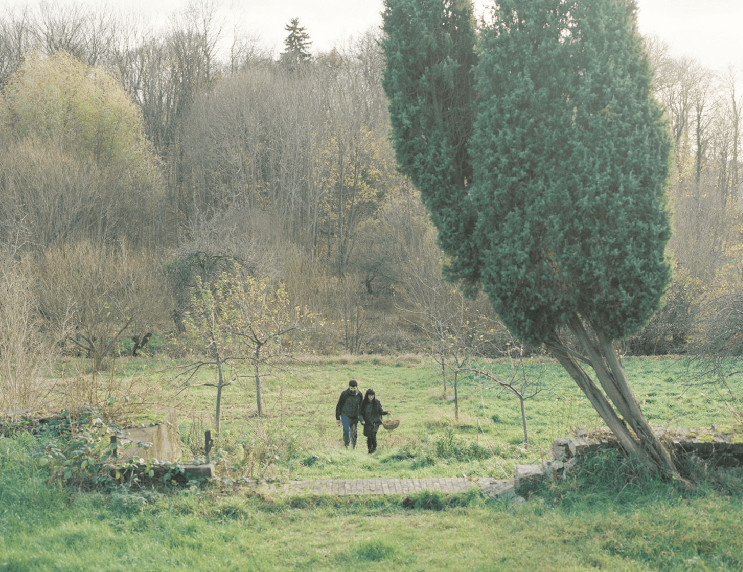
- You two have just opened a printing studio here in Gerswalde in summer 2017.
What kind of impression do you have so far? - Jan: Apart from the closer relationship to nature and strong impressions of the seasons and the weather, the people living in the village and the relationship we have with them are the biggest and very positive differences from living in the city. Because the village is quite small and the area is very wide, it is something special to meet and see people at all during our normal day. And the relationship we have and form with people here is very direct and strong because everybody lives closely together. It is normal to help each other.
- Tell us about some creative trends that are being developed in this village.
- Jan: Here in Gerswalde, there are a lot of creative people, some have moved in and others are commuting from Berlin. Among those people, the active pioneer was Lola Randl, a film director. I think I can say that she and her family started this movement. They bought an old hotel in front of the church, and beautifully renovated it by themselves. They are such kind people and are getting along well with the villagers.
Every time I talk with her, I can feel various kinds of possibilities. If you want to start something new, you will feel an exciting atmosphere here, full of possibilities, like, “ah, Lola is just looking for someone who wants to start a bakery.” - We can feel the positive and open atmosphere from your story.
- Jan: Right. A lot of creative friends have started to gather in this village like that. “Café zum Löwen”, a cozy café that is run by three Japanese ladies
and that is open during the spring and summer season, is very popular for example. It is in a spacious greenhouse with a big palm tree. You can taste exquisite cake and onigiri enjoying a beautiful garden. A lot of people come all the way to that café from the center to sense their worldview.
After discussing the possibilities of this village with Lola, we made up our mind to move in. Now we are planning to open a gallery and shop with a small selection of books. The gallery will be called Loewen.haus and open this spring. We are collaborating with “Zabriskie”, a bookstore in Berlin that focuses on nature and culture. Mutual sensitivity will resonate with each other in that place. - In a community in Gerswalde, what kind of role will dahier play?
- Jan: We want to be something like a small print shop in the countryside. By printing name cards or pamphlets and organizing workshops using risograph printing, we're trying to connect the local people with each other. As a member of the community, we always want to do something for the village.
Though we receive orders not only from other parts of Germany but all over the world like America and Asia, we also want to settle down in this village firmly. We want to be a print shop loved by the local people, keeping a connection to the world.
ヤンさんと、ジョン ワさんの暮らすゲルスヴァルデという村には、何でも揃う大きなスーパーマーケットや、深夜まで営業しているレストランなど、都会生活に慣れた私たちが、およそ必要だと考えるものは何もない。週末が来る前に食料や水を買い出していないと死活問題にだってなるほどだ。しかし、この小さな村には、子ども時代に感じたような、恐れのない、地球の果てに向かって走り出せるような、自由な可能性を感じさせられた。今回はわずかな滞在期間ではあったが、しっかり時間をかけてこの村で起こっている変化を見つめることができたのならば、日本で当たり前だと思っていた様々なことが、新たな意味を持って目の前に立ち現れるのかもしれない。ジョンワさんが、次はぜひ夏に来てと誘ってくれた。緑の季節にくれば、色々と質問しなくたって、何でこの村に多くの人が惹きつけられるのかわかるはずと。
In Gerswalde where Jan and Jeong Hwa live, there is nothing at all we city dwellers think necessary such as big supermarkets or restaurants which are open till late at night. Still, we felt a free potential from this small village, like the one you felt in your childhood as if you could run toward the end of the earth, fearlessly. Unfortunately, our stay was very short this time. If we could spend more time to watch what was happening in this village, various things we take for granted in Japan would bring us new meanings. Jeong Hwa asked us to come in summer next time. If we do in a season of green, it will not be necessary to ask a lot of questions about why this village attracts so many people, she said.
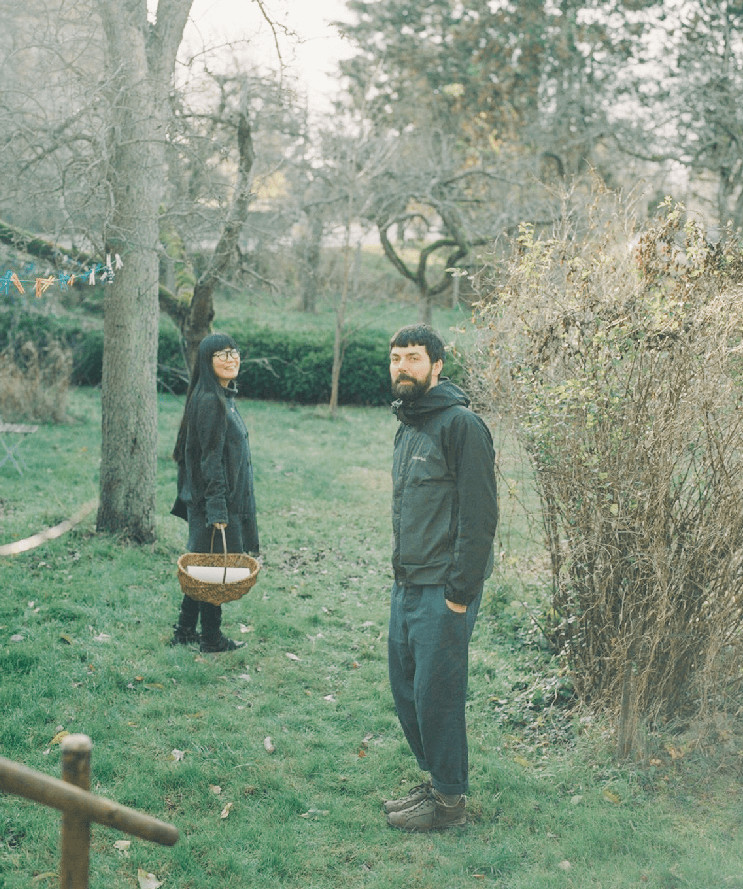
PROFILE
ダヒアーは、ベルリンから北へ100kmに位置するゲルスヴァルデを拠点にするアーティスト、ヤン・リンドバーグとジョン ワ ミンによる、リソグラフプリントショップ。ソーシャルアートのコンセプトをベースに、さまざまなアーティストとのコラボレーションや、ものづくりのワークショップを通して人と地域をつなげる活動を行なっている。
リソグラフィとは、日本の理想科学工業株式会社が生産する簡易印刷機による孔版印刷による技術で、コピー機よりもスピードとコスト面のメリットがうたわれるが、独特のインクのかすれや質感、工夫次第でさまざまな印刷表現がっできることから、アーティストやクリエイターに広く受け入れられている。
dahier is a small risograph printing shop and design studio in Gerswalde, a remote village 100 km north of Berlin, by artists Jan Lindenberg and Jeong Hwa Min. Based on the social art concept, they collaborate with various artists and carry out various activities to connect people with the area through creative workshops.
Risograph printing is a stencil printing technology by a simple printing machine produced by RISO KAGAKU Corporation in Japan. It is more advantageous in regards to speed and cost than other copying machines. Moreover, because of its unique blur, texture and high flexibility for expression, it has been widely popular among artists and creators.
